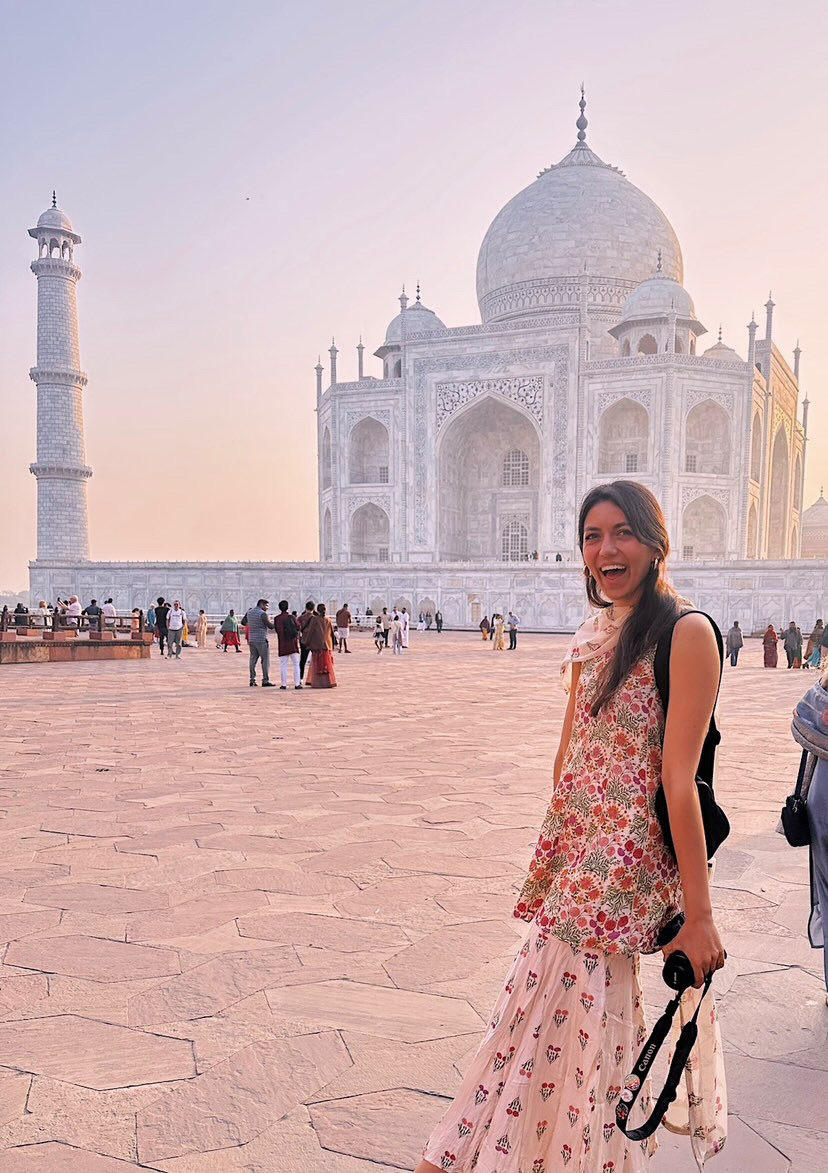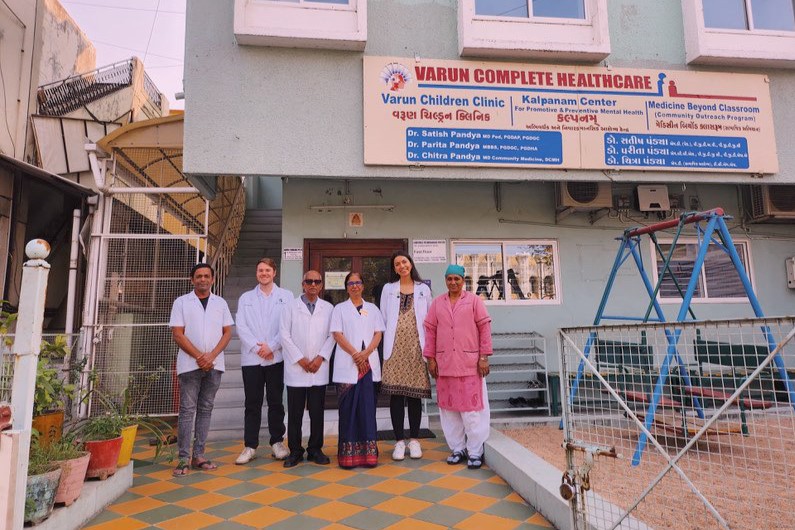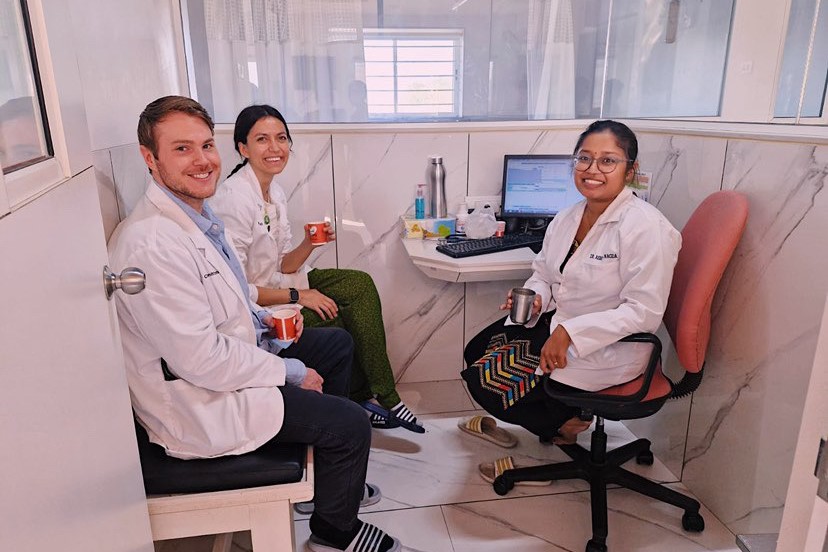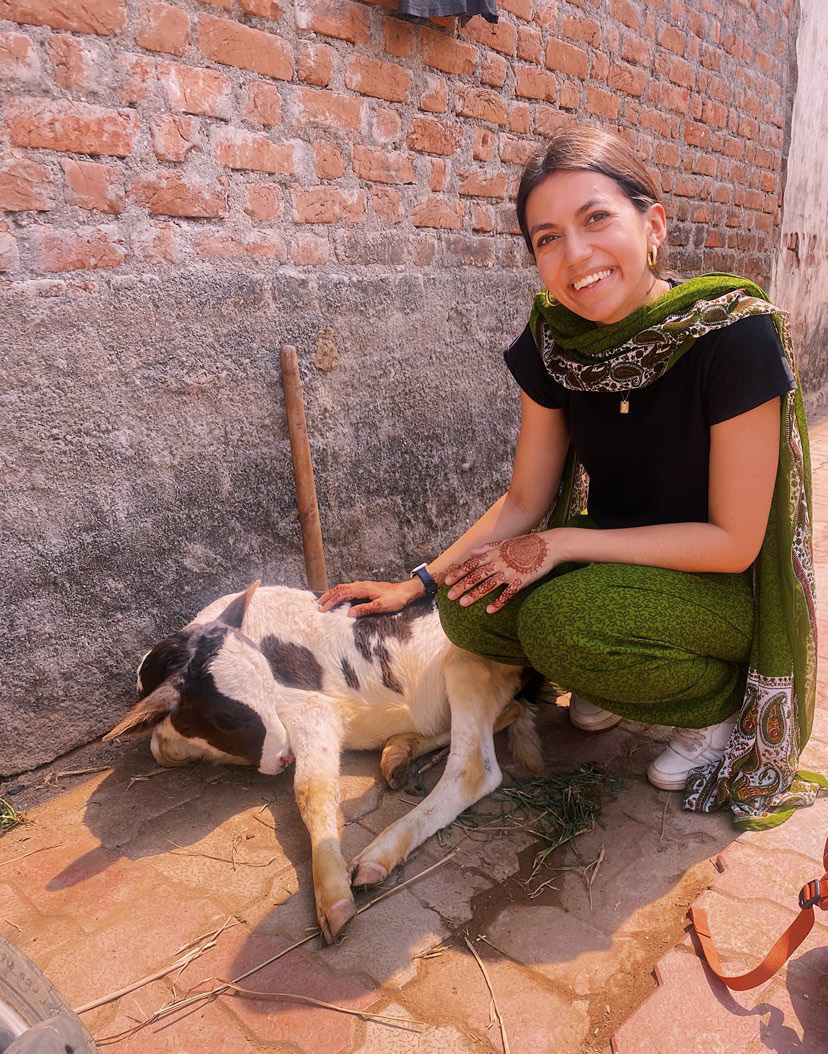Gaining a Global Perspective Through the Leadership in Medicine for Underserved Program
June 30, 2025
 As part of her fourth-year elective in the Leadership in Medicine for the Underserved (LMU) program, MSU College of Human Medicine graduate Anjali Chandra traveled to Gujarat, India, to deepen her understanding of community-based care in underserved settings.
As part of her fourth-year elective in the Leadership in Medicine for the Underserved (LMU) program, MSU College of Human Medicine graduate Anjali Chandra traveled to Gujarat, India, to deepen her understanding of community-based care in underserved settings.
The rotation not only strengthened her clinical skills—it provided a personal connection to the global health disparities that first inspired her to become a physician.
“I knew I wanted to do my international rotation in India because my dad was born there,” Chandra said. “So much of my early interest in medicine was inspired by hearing about the differences in health outcomes for my family members in India compared to those in the U.S.”
Chandra designed her four-week rotation in collaboration with Chitra Pandya, MD, a community medicine physician who had led an LMU workshop during her third year.
“This fourth-year elective is a culmination of everything LMU students have learned,” said Gurbaksh Esch, MD, interim director of the program. “Students take what they’ve learned from didactic coursework, community engagement, and clinical rotations, and apply it in real-world settings that challenge their adaptability, empathy, and resourcefulness.”
Medicine in Action
Chandra’s days were filled with immersive experiences. In rural villages, she joined mobile health teams to conduct screenings, dispense medications, and educate patients about chronic diseases.
Through partnerships with organizations like SEWA Rural and the Trust for Reaching the Unreached, she focused on providing care to rural tribal communities in India that previously did not have reliable or affordable access to a physician.

“The field visits were an enlightening experience for me,” Chandra said. “I saw how community health workers, called Asha workers, live among the villagers, develop trusting relationships with them, and use these connections to educate patients about their medical conditions and empower them to take charge of their health.”
One of the most memorable experiences came during an “Eye Camp,” a mobile vision screening program in a rural village. More than 200 patients were screened in a single day—many received glasses on the spot or were transported for free cataract surgery the next day.
 “Many of the patients we saw were employed as farmers, so they spent long days out in the sun,” she recalled. “This inevitably led to the development of cataracts, which continued to progress for years without any intervention.”
“Many of the patients we saw were employed as farmers, so they spent long days out in the sun,” she recalled. “This inevitably led to the development of cataracts, which continued to progress for years without any intervention.”
One patient was blind to everything but light and had never seen a doctor because he couldn’t afford the surgery. He was brought back to the hospital for cataract surgery—at no cost.
“It was amazing to be able to witness such life-changing work being done for patients who otherwise would not have thought that such treatment could be possible.”
A Lasting Impact
 Throughout her rotation, Chandra encountered challenges that pushed her professionally and personally. Navigating language barriers, witnessing extreme poverty, and confronting health inequities tested her emotional resilience.
Throughout her rotation, Chandra encountered challenges that pushed her professionally and personally. Navigating language barriers, witnessing extreme poverty, and confronting health inequities tested her emotional resilience.
“It was disheartening at times, but seeing the work of the nonprofit organizations and physicians throughout this rotation taught me that even small acts of service can be the start of making lasting change in a community,” she said.
Esch agrees that the LMU rotation leaves a lasting impression. “Our students go on to be empathetic, community-engaged, culturally competent, equity-centered physician leaders in their communities,” she said.
As she moves forward in her medical career, Chandra’s time in Gujarat will remain a guidepost for the kind of physician she hopes to be—one who leads with community, compassion, and a holistic view of health.
By Nadija Kadunic | Media contact: Emily Linnert

